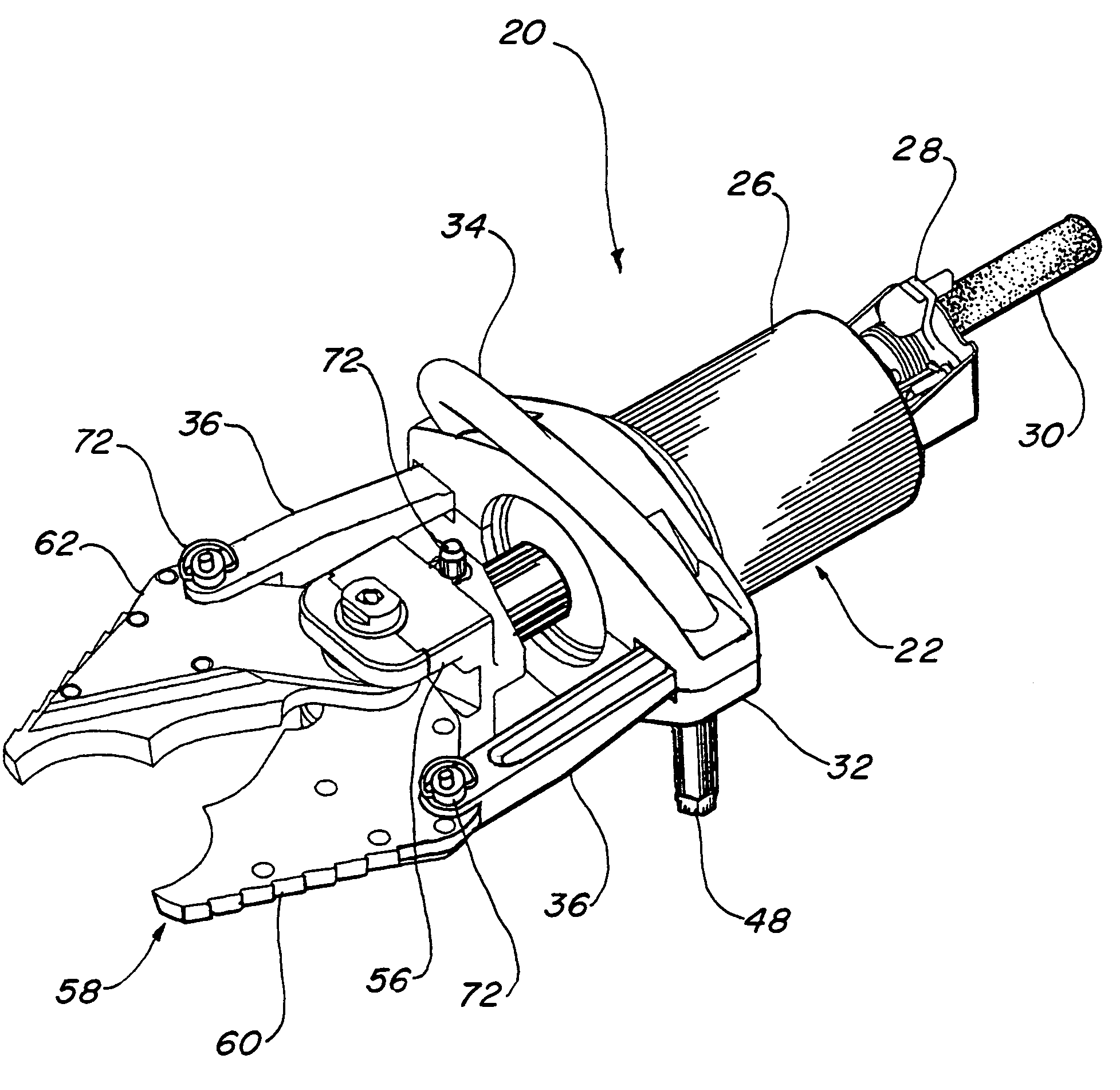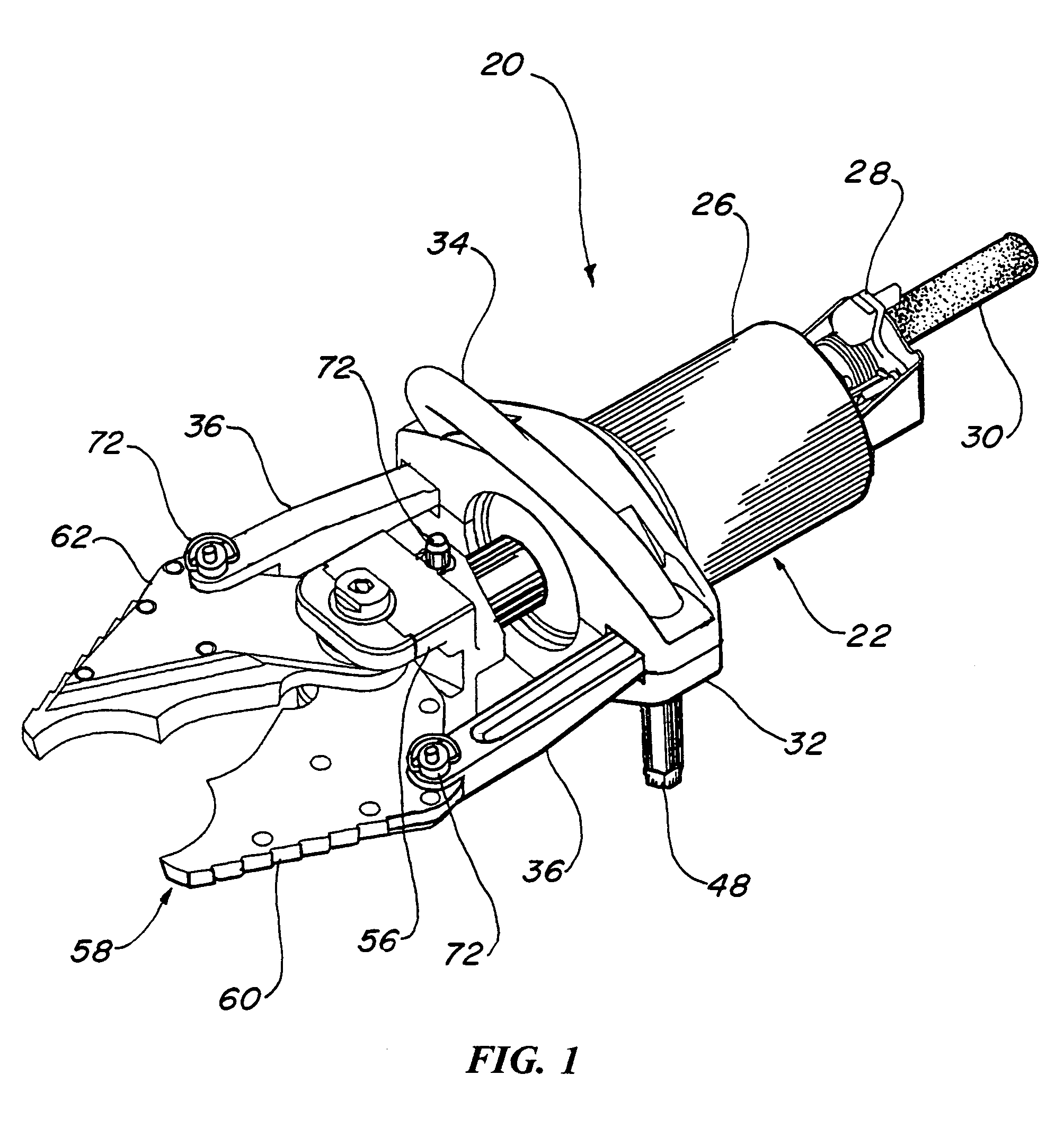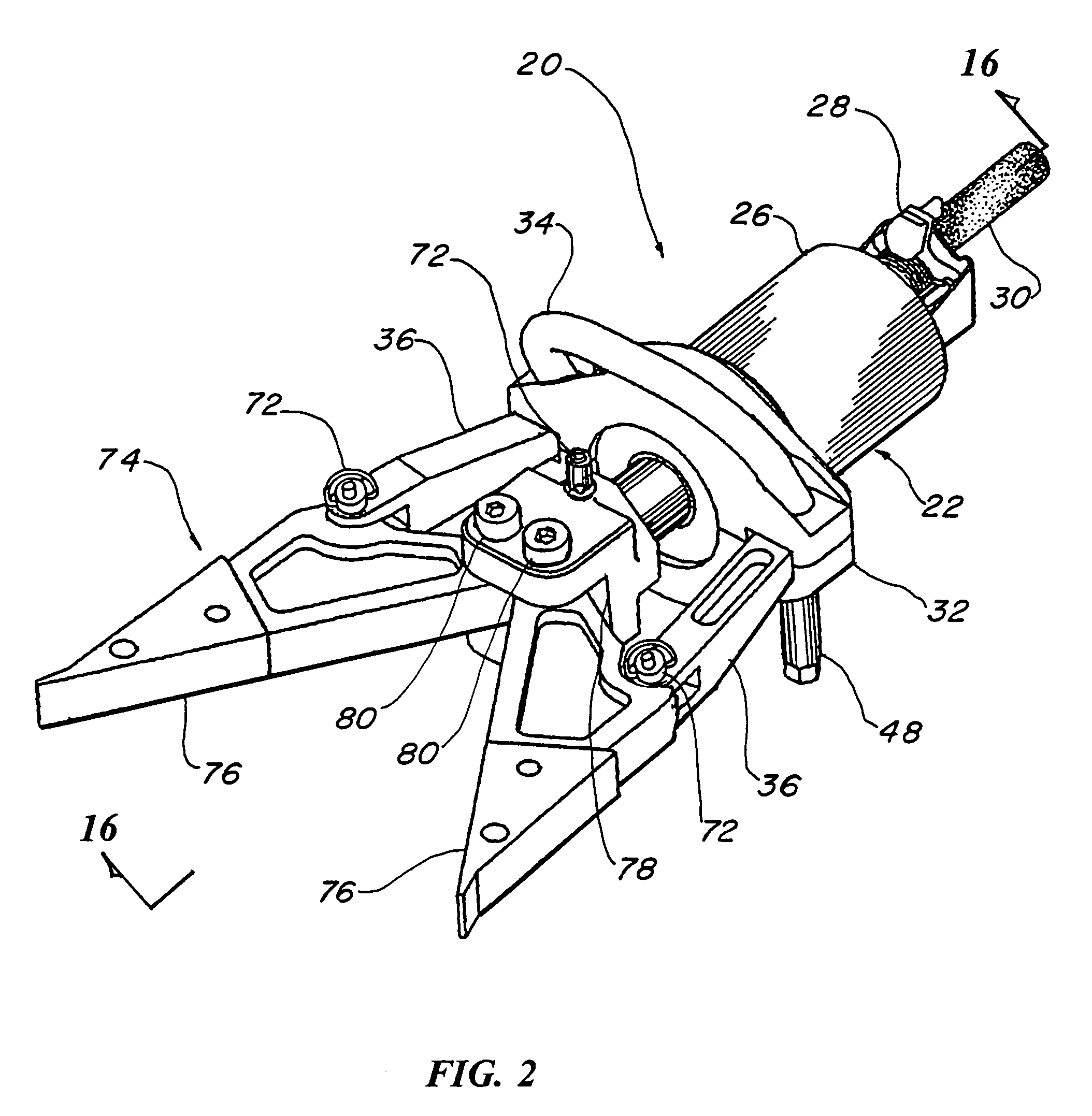Hydraulic rescue tool
a technology of hydraulic tools and tools, applied in the field of hydraulic tools, can solve the problems of increased resistance, enormous friction, and difficulty in achieving the above-mentioned procedures in the field without the proper equipmen
- Summary
- Abstract
- Description
- Claims
- Application Information
AI Technical Summary
Benefits of technology
Problems solved by technology
Method used
Image
Examples
Embodiment Construction
[0041]The best mode for carrying out the invention is presented in terms of a preferred embodiment. The preferred embodiment, as shown in FIGS. 1 through 17, is comprised of a rescue tool 20, preferably using hydraulics in the form of a hydraulic cylinder 22 including a piston rod 24 within a cylinder housing 26 creating the requisite linear drive means. The piston rod 24 extends outward and retracts inward, thus creating a pushing and pulling action. It should be noted, however, that while the hydraulic cylinder 22 is the preferred means, other methods may be used with equal ease, such as pneumatic cylinders, electric linear drive mechanisms, pyrotechnic devices, or any drive that utilizes a ram or arm that moves in a linear direction.
[0042]For convenience of operation, hydraulic controls 28 for the cylinder are attached at the end of the cylinder 22, opposite the piston rod 24, as shown in FIGS. 1–4. The controls 28 cause the piston rod 24 to extend or retract and are well known i...
PUM
| Property | Measurement | Unit |
|---|---|---|
| diameter | aaaaa | aaaaa |
| force | aaaaa | aaaaa |
| torques | aaaaa | aaaaa |
Abstract
Description
Claims
Application Information
 Login to View More
Login to View More - R&D
- Intellectual Property
- Life Sciences
- Materials
- Tech Scout
- Unparalleled Data Quality
- Higher Quality Content
- 60% Fewer Hallucinations
Browse by: Latest US Patents, China's latest patents, Technical Efficacy Thesaurus, Application Domain, Technology Topic, Popular Technical Reports.
© 2025 PatSnap. All rights reserved.Legal|Privacy policy|Modern Slavery Act Transparency Statement|Sitemap|About US| Contact US: help@patsnap.com



